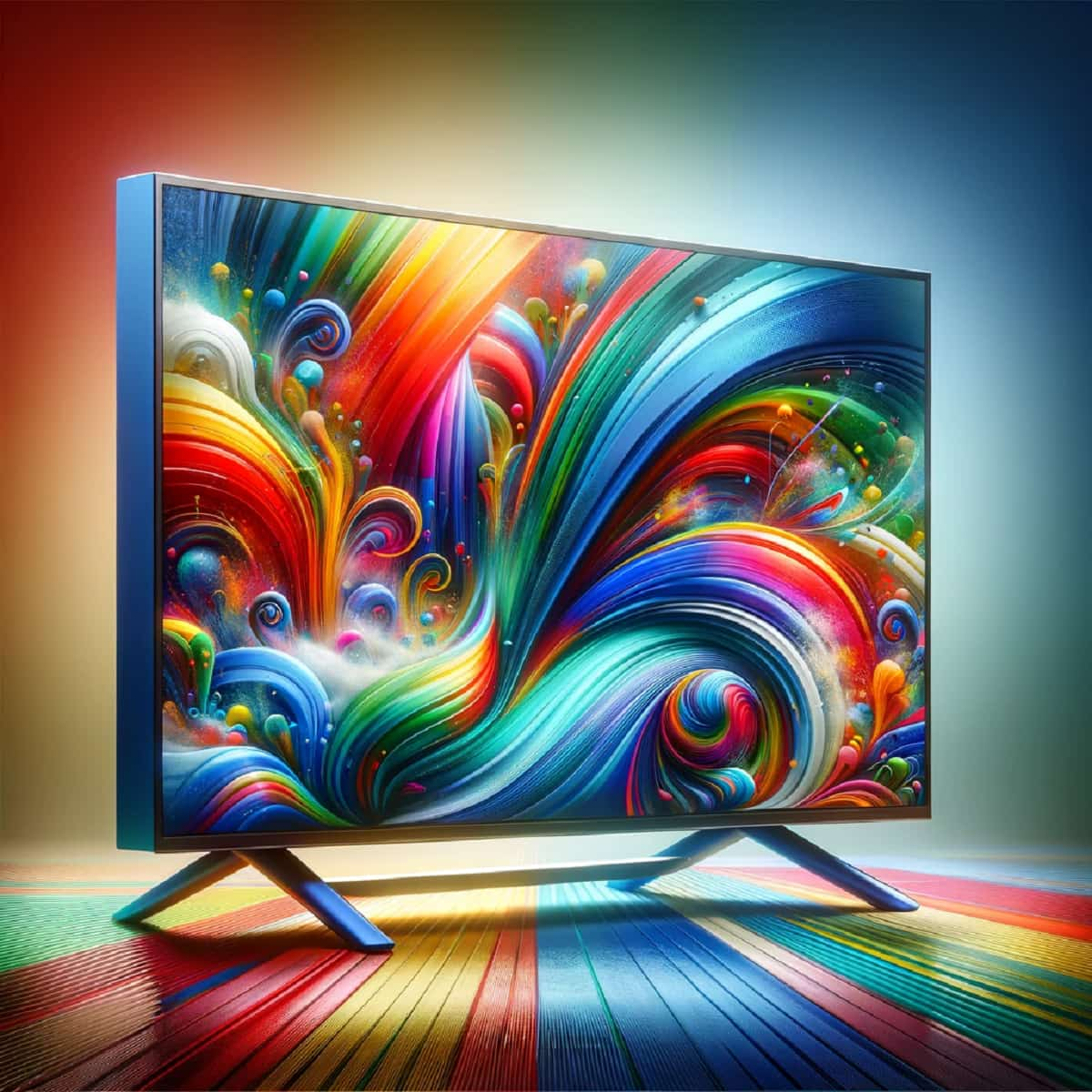Smart TVs have come a long way from their early days. As technology continues to evolve, the future of smart TVs looks promising with exciting advancements on the horizon. This guide explores the upcoming trends, innovations, and what you can expect in the world of smart TVs.

The Evolution of Smart TVs: From Android TV to WebOS
Smart TVs have evolved significantly over the years. Android TV, with its extensive app ecosystem and user-friendly interface, has been a popular choice. However, other platforms like WebOS, which is used by LG, also offer unique features and improvements.
- Android TV: Known for its versatility and integration with Google services, Android TV has been a dominant player in the smart TV market.
- WebOS: LG’s WebOS is praised for its intuitive interface and ease of use, with features like the Magic Remote that enhance user interaction.
Each platform has its strengths, but the future will likely see more convergence and improvements in both systems to meet diverse consumer needs.
Will Android TV Survive in the Next 5 Years?
Android TV’s future looks promising, but it faces stiff competition from other platforms like Google TV and Apple TV. Its survival will depend on:
- Innovation: Continued updates and feature improvements are crucial for Android TV to stay relevant.
- Partnerships: Collaborations with TV manufacturers and content providers can boost its market presence.
- User Experience: Enhancing user experience through better interfaces and personalized content will be key.
If Android TV continues to evolve and adapt to market trends, it is likely to remain a strong contender in the smart TV arena.
How AI and Machine Learning Could Transform Smart TVs
Artificial Intelligence (AI) and Machine Learning (ML) are set to revolutionize smart TVs by:
- Personalized Recommendations: AI algorithms can analyze your viewing habits and suggest content tailored to your preferences.
- Voice Control: Improved voice recognition and natural language processing will make voice commands more accurate and intuitive.
- Enhanced Picture Quality: AI-driven image processing can automatically adjust picture settings for optimal viewing.
These advancements will make smart TVs more intelligent and responsive to your needs.
Predicting the Future of Android TV in a Competitive Market
In a competitive market, Android TV will need to focus on:
- Exclusive Features: Offering unique features or partnerships that set it apart from competitors.
- Performance Improvements: Enhancing speed, efficiency, and overall performance to meet user expectations.
- Content Partnerships: Expanding content libraries and exclusive deals to attract and retain users.
By addressing these areas, Android TV can maintain its position in the evolving smart TV landscape.
The Impact of 8K Technology on Smart TV Development
8K technology is the latest breakthrough in TV resolution, offering:
- Ultra-High Definition: Four times the resolution of 4K, providing incredible detail and clarity.
- Future-Proofing: As content becomes available in 8K, having an 8K TV ensures you’re ready for the latest advancements.
- Enhanced Immersion: The higher resolution creates a more immersive viewing experience, especially on larger screens.
While 8K technology is still emerging, its development will push smart TV advancements forward.
How Smart TV Technology Will Change by 2030
Looking ahead to 2030, smart TV technology is expected to:
- Seamlessly Integrate with Smart Homes: TVs will work more effectively with other smart devices and home automation systems.
- Offer Immersive Experiences: Advances in AR and VR could lead to new ways of experiencing content.
- Enhanced AI Capabilities: Smarter AI will provide even better recommendations and more intuitive user interactions.
These changes will redefine how we interact with our TVs and consume content.
The Future of Interactive Smart TVs: What to Expect
Interactive smart TVs are poised to become more engaging with features like:
- Enhanced Interactivity: More interactive content and applications that allow for user participation.
- Social Integration: Features that enable sharing and interacting with friends and family in real-time.
- Advanced Gesture Controls: Improved gesture recognition for controlling the TV without a remote.
These innovations will make TV watching more interactive and engaging.
The Role of Streaming Services in Shaping Smart TV Markets
Streaming services play a crucial role in shaping smart TV markets by:
- Content Variety: Offering a vast range of content that attracts users to specific platforms.
- Original Programming: Investing in exclusive shows and movies that drive subscriptions and viewership.
- Technological Integration: Collaborating with smart TV manufacturers to optimize their apps and services.
As streaming services continue to grow, they will drive the evolution of smart TVs and influence user preferences.
The Shift Towards Smarter and Lighter TV Operating Systems
Smart TV operating systems are becoming:
- More Lightweight: Designed to run smoothly on a variety of hardware configurations.
- More User-Friendly: Offering simpler, more intuitive interfaces for easier navigation.
- Better Integrated: Providing seamless integration with other smart home devices and services.
This shift will enhance the overall user experience and make smart TVs more accessible.
Innovations in Smart TV Hardware: What’s Next?
Future innovations in smart TV hardware may include:
- Flexible Displays: TVs with flexible screens that can be adjusted or folded for different viewing experiences.
- Advanced AI Processors: More powerful processors to handle complex AI tasks and deliver superior performance.
- Improved Connectivity: Faster and more reliable connectivity options, including advancements in wireless technology.
These innovations will drive the development of smarter and more versatile TVs.
Consumer Buying Guides
How to Choose the Best Android TV for Your Home
When choosing an Android TV, consider:
- Screen Size: Choose a size that fits your space and viewing distance.
- Resolution: Higher resolutions (4K or 8K) offer better picture quality.
- Features: Look for features like voice control, smart apps, and connectivity options.
What to Look for When Buying a Smart TV in 2024
In 2024, focus on:
- Smart Features: Ensure the TV has the latest smart features and apps.
- Picture and Sound Quality: Higher resolution and better sound enhance the viewing experience.
- Ease of Use: A user-friendly interface and simple setup process are important.
Best Android TVs for Seniors: Easy to Use and Setup
For seniors, consider:
- Simple Interfaces: TVs with straightforward menus and large, readable fonts.
- Voice Control: Voice commands can make navigation easier.
- Remote Control: A simple, easy-to-use remote with fewer buttons.
How to Pick a Smart TV Based on Your Viewing Habits
Choose based on:
- Content Preferences: Select a TV that supports your favorite streaming services and content types.
- Viewing Environment: Consider factors like room lighting and screen size for the best viewing experience.
- Interactivity Needs: Decide if you want interactive features like voice control or gaming capabilities.
Top Android TVs for Gamers: Best Options Reviewed
For gamers, look for:
- High Refresh Rates: Ensures smooth gameplay and reduces lag.
- Low Input Lag: Essential for responsive gaming.
- 4K or Higher Resolution: Provides a clearer, more detailed picture.
Android TV Buying Guide: Features You Shouldn’t Ignore
Key features to consider include:
- Processor Performance: A powerful processor ensures smooth performance.
- App Compatibility: Ensure the TV supports the apps and services you use.
- Update Support: Regular updates keep your TV secure and up-to-date.
Best Budget Smart TVs Under 20,000 INR
For budget options, consider:
- Value for Money: Look for TVs that offer good features at a lower price.
- Essential Features: Ensure the TV has basic smart features and decent picture quality.
- Brand Reputation: Choose brands known for reliability and customer support.
Best Android TVs for Family Entertainment in 2024
Family-friendly features include:
- User Profiles: Allow different family members to have their own profiles and recommendations.
- Parental Controls: Manage content access and screen time for children.
- Multi-User Support: Multiple users can access their favorite content without interfering with others.
The Best 32-Inch Android TVs for Small Spaces
For small spaces, look for:
- Compact Size: A 32-inch TV is ideal for smaller rooms or apartments.
- High Resolution: Even smaller TVs should offer good picture quality.
- Smart Features: Ensure it has the necessary apps and connectivity options.
How to Choose Between Android TV and Non-Android Smart TVs
Consider:
- App Ecosystem: Android TVs offer access to Google Play Store, while other platforms may have different app stores.
- Integration: Android TVs integrate well with Google services, while other platforms may offer different benefits.
- Personal Preferences: Choose based on your preferences for interface, voice control, and available features.
By understanding these trends and considerations, you can make informed decisions and stay ahead in the ever-evolving world of smart TVs. Whether upgrading your current setup or buying a new TV, this guide provides the insights you need to enhance your viewing experience.















